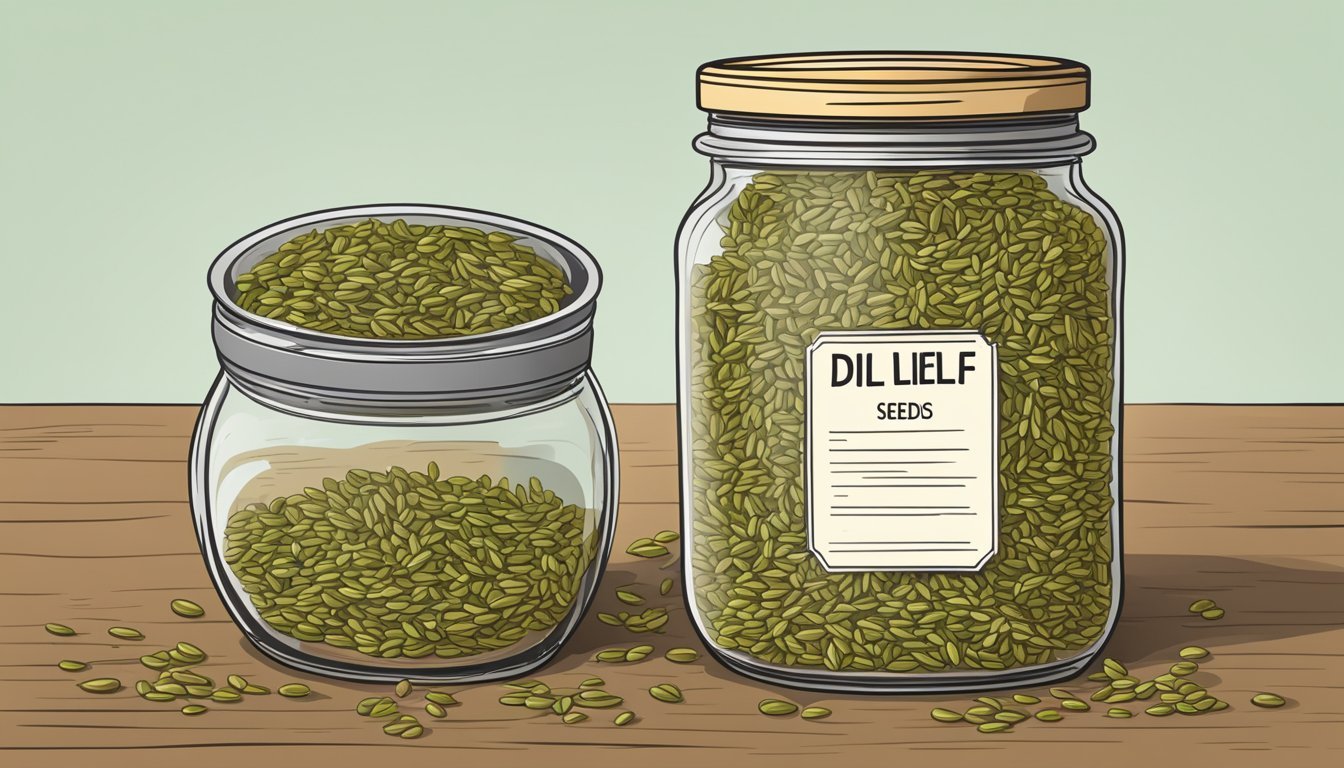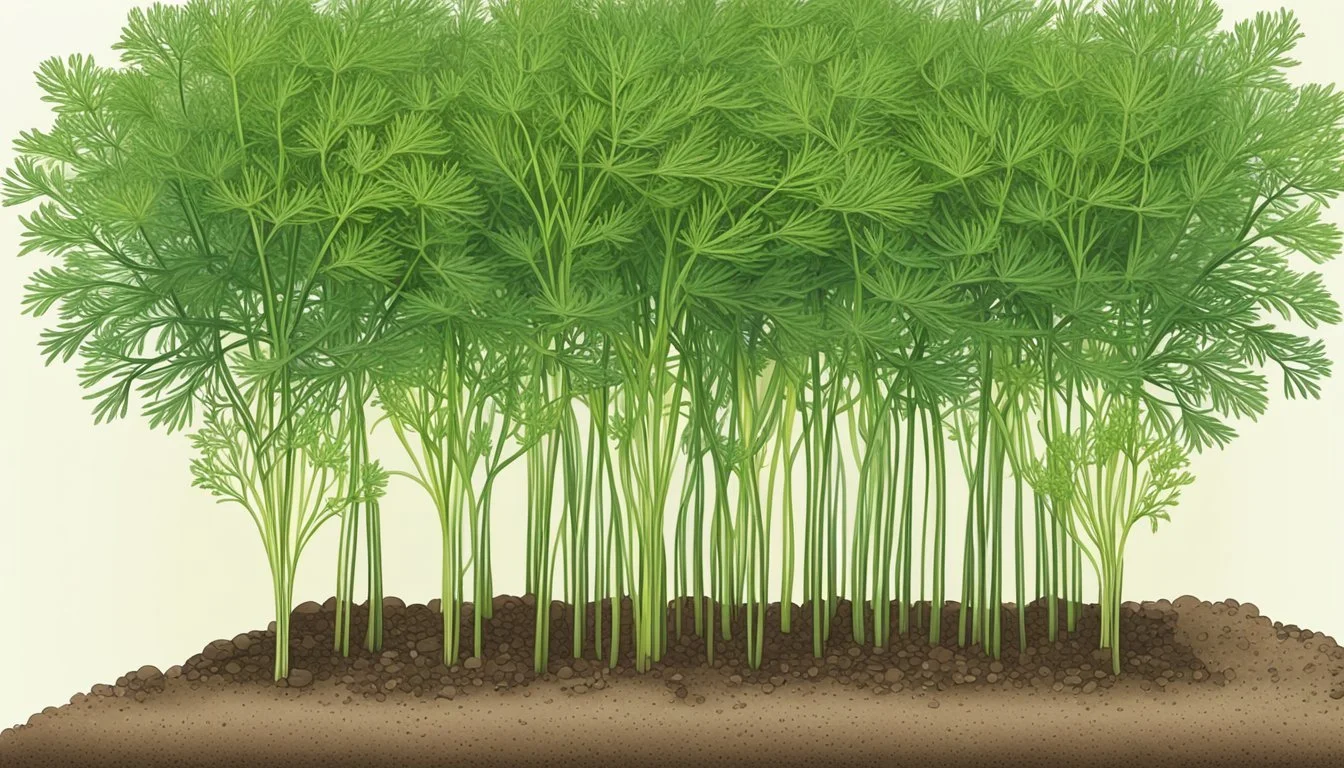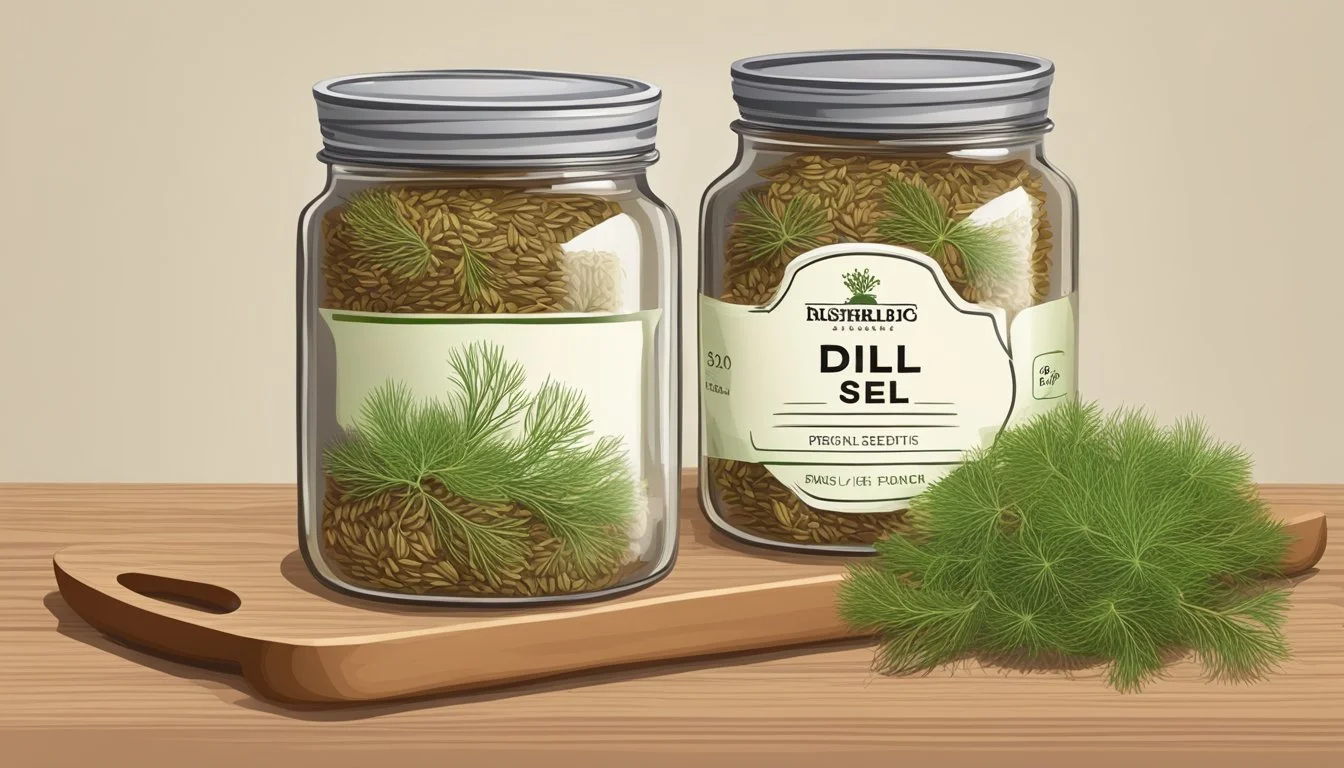How Long Do Dill Seeds Last?
Shelf Life and Storage Tips
Understanding the longevity of seeds (how long do seeds last?) is crucial for both amateur and experienced gardeners. Dill (how long does dill last?) seeds (how long do dill seeds last?), in particular, have a significant shelf life when stored under favorable conditions. Typically, if kept in a cool, dry place, dill seeds maintain their quality and germination rate for about 3 to 4 years. After this period, the viability of the seeds may decrease, meaning they are less likely to sprout when planted.
The storage environment plays a fundamental role in preserving dill seeds. It's best to store them in containers with tight-fitting lids to protect them from moisture and light, which can compromise their quality. Additionally, to prevent loss of flavor and potency, dill seeds should be kept away from heat sources, such as stoves and ovens, and areas exposed to direct sunlight. Proper storage not only extends the shelf life of the seeds but also ensures that they retain their aromatic qualities, which are essential for culinary purposes.
Understanding Dill Seeds
Dill seeds are the fruit of the herbaceous plant Anethum graveolens, commonly referred to as dill. This plant belongs to the Apiaceae family, which encompasses a range of herbs and spices. Dill itself is highly regarded not only for its seeds but also for its aromatic leaves.
Characteristics of Dill Seeds:
Shape: Small, flat, and oval, with one side having a slight ridge.
Color: Tan to brown.
Flavor: Slightly bitter and aromatic, reminiscent of a mild caraway.
Storage and Longevity: Properly stored dill seeds maintain their quality for about 3 to 4 years. The keys to prolonging their shelf life include:
Cool, Dry Environment: Prevents the loss of essential oils.
Darkness: Protects against light degradation.
Airtight Containers: Reduces oxidation.
Dill seeds are part of many culinary traditions, prized for their ability to impart a distinctive flavor and aroma to dishes. As seeds of an annual, they are central to the plant's reproduction cycle, ensuring future generations of dill plants.
When it comes to storage, it is advisable to avoid places with fluctuating temperatures and moisture, such as near stoves or windows. A pantry or cupboard serves as an ideal location to keep dill seeds protected from adverse conditions.
In essence, understanding the nature of dill seeds and how they should be stored is vital for anyone looking to use them in culinary applications or grow the plant itself. Their ease of storage and unique flavor profile make them a versatile addition to many recipes and a staple in the garden.
Optimal Storage Conditions
Proper storage is crucial for maintaining the viability and flavor of dill seeds. Understanding the importance of factors such as container selection, temperature, humidity, and storage location can significantly extend their shelf life.
Airtight Containers
Storing dill seeds in airtight containers is essential to prevent moisture and air from compromising quality. Glass jars with tight-fitting lids are ideal for this purpose as they do not transfer any smells or tastes to the contents. Plastic containers can also be used if they seal well. One should ensure that the dill seeds are completely dry before sealing them in a container to prevent mold growth.
Temperature and Humidity Control
The longevity of dill seeds is highly dependent on maintaining low temperature and humidity levels. The ideal condition involves a cool, dry place with a temperature around 42°F (5.6°C). A simple guideline for dill seed storage is that the sum of the storage temperature in Fahrenheit and the percent relative humidity should be less than 100. For many, this means storing their seeds in a refrigerator can help in achieving these conditions.
Dry Storage Areas
Selecting the right storage area contributes to how well dill seeds are preserved. The area should be dry and away from direct sunlight. Paper bags can be used for initial drying of seeds, but for long-term storage, they should be transferred to an airtight container. One must ensure the storage area is free from fluctuating temperatures and humidity to prevent introduction of moisture, which could result in spoilage.
Maximizing Seed Longevity
Achieving the full potential shelf life of dill seeds necessitates specific storage techniques and a clear understanding of seed viability indicators. The seeds' inherent quality also plays a pivotal role in how long they remain viable.
Seed Saving Techniques
Proper Storage: To maintain viability, dill seeds should be stored in containers with tight-fitting lids. The storage environment must be cool and dry, as dill seeds' longevity is compromised by moisture and high temperatures. Silica gel packets can be added to seed containers to absorb excess moisture.
Temperature: Ideally, seeds should be stored at temperatures between 32-41°F (0-5°C).
Humidity: Keep humidity levels low, preferably around 20-30%.
Signs of Seed Viability
Visual Inspection: A simple examination of dill seeds can reveal signs of aging or improper storage. Seeds that are wrinkled or discolored may have decreased viability.
Germination Test: Place a sample of seeds on a moist paper towel, cover it with another moist towel, and keep them in a warm area. A high germination rate after 7-10 days indicates good viability.
Importance of Seed Quality
Genetic Factors: The inherent quality of the seed is critical. Seeds sourced from reputable suppliers tend to have reliable germination rates. High-quality, mature seeds are often more resilient and have a longer shelf life.
Selection: Choose seeds from healthy plants and avoid those from diseased or weak specimens, as this can significantly affect viability.
Handling: Gentle handling during the saving process preserves the seed's integrity, reducing the risk of damage which could decrease viability.
Planting and Growing Dill
Growing dill is a straightforward process suited to many garden settings. This herb prefers sunny locations and well-drained soils, offering both culinary and garden benefits. With proper care, gardeners can enjoy a bountiful dill harvest, suitable for a variety of uses.
Preparing for Planting
Before planting dill seeds, select a garden spot that receives at least 6 to 8 hours of full sun daily. Soil should be well-draining to prevent water from pooling around the developing taproot. Although dill can tolerate some soil variations, it thrives in a pH between 5.5 and 6.7. Be sure to clear the area of weeds and large debris. To prepare dill seeds for planting, no soaking is necessary; they are ready to sow directly into the soil.
Dill Growth Requirements
When growing dill, consider its needs:
Sunlight: Full sun is essential for healthy dill plants.
Soil: Opt for well-draining soil to accommodate the dill's taproot.
Water: Dill requires consistent moisture, but avoid overwatering.
Spacing: Plant dill seeds around 18 inches apart to allow for their wispy foliage and tall growth.
Seedlings typically appear within 10 to 14 days. For a continuous supply, sow seeds every two weeks throughout the growing season.
Harvesting and Using Dill
Dill is ready for harvesting when its leaves are feathery and green; this can be as soon as eight weeks after planting. To harvest:
Leaves: Snip dill leaves as needed, preferably in the morning.
Seeds: For harvesting dill seeds, wait until the plants flower and seeds turn brown.
Harvested leaves are perfect for adding flavor to dishes such as soups, dressings, and potato salads. Dill seeds are commonly used for pickling. When cutting back dill, take care not to damage the central stem, as this could reduce further growth.
Culinary and Medicinal Uses
Dill seeds are a versatile ingredient, adding a unique flavor profile to various culinary creations. They are commonly used in soups, salads, and salad dressings, imbuing dishes with a slightly sweet and grassy taste that is characteristic of dill. Chefs often incorporate dill seeds to complement fish courses or to season pickles, borrowing from its traditional use in European and Asian cuisines.
In the kitchen, fresh dill and dill weed enhance the taste of vegetables and are key components in diversifying the flavors of a dish. To maintain their best quality, store dill seeds in an airtight container away from heat and light; a dark pantry or cupboard suits this purpose well.
Culinary Applications:
Enhances flavor in seafood dishes. (What wine goes well with seafood dishes?)
Integral spice for pickling vegetables.
Adds a fresh dimension to salads and dressings.
Medicinally, dill seeds have been recognized for their digestive benefits. They contain compounds that may soothe the stomach and aid in digestion. Dill is also edible in its entirety, from seeds to fronds, and can be a nutritious addition to a diet due to its antioxidant properties.
Medicinal Benefits:
Supports digestion.
Acts as an antioxidant.
When using dill seeds, it's important to note the balance of flavor they bring to a dish. While their aroma is potent, they should not overpower the other elements but rather complement the overall taste profile. In medicinal use, they contribute to overall wellbeing by being part of a balanced, healthy diet.
Seed Compatibility with Other Plants
Dill seeds exhibit varying levels of compatibility with other plants, influencing both the cultivation of dill and the neighboring plant varieties. Understanding companion planting and avoiding antagonistic plants is essential for a thriving garden.
Companion Planting
Companion planting is a strategic approach that can bolster growth and reduce pests. Certain vegetables and herbs can be beneficial when planted alongside dill:
Vegetables: Dill is especially compatible with cabbage, onions, cucumbers, and lettuce. The herb can help protect these plants from harmful pests.
Benefits for pickling varieties: When growing cucumbers for pickles, dill can enhance flavor and supports the growth of beneficial insects.
Beneficial Insects: Dill attracts beneficial insects like honeybees and butterflies, which are essential for pollination.
Avoiding Antagonistic Plants
While some plants benefit from the presence of dill, others may suffer:
Carrots and Dill: It's advisable to keep dill away from carrot crops as they can cross-pollinate, potentially affecting seed production.
Tomatoes and Peppers: Both tomatoes and peppers may be negatively affected by dill, as it can attract tomato hornworms.
Sensitive Herbs and Vegetables: Dill may also have a negative impact on plants such as fennel (how long does fennel last?), carrots, parsnip, and kohlrabi. It can inhibit their growth when planted too close.
By being mindful of these compatibilities and antagonisms, gardeners can ensure that dill and its companion plants prosper.
Dealing with Pests and Diseases
Successful cultivation of dill requires vigilance against certain pests and diseases. Maintaining plant health is a proactive process critical to ensuring a bountiful dill harvest.
Common Pests
Aphids are one of the most common pests affecting dill. They are small, soft-bodied insects that can be green, yellow, or black. They often cluster on new growth and under leaves, sucking the sap from the plant, which can lead to distorted growth and a weakened plant. To control aphids:
Inspect dill plants regularly, especially under leaves.
Introduce beneficial insects, such as ladybugs, that consume aphids.
Use a strong stream of water to knock aphids off plants.
Apply insecticidal soaps or neem oil, following product instructions carefully.
Dill can attract other pests too, which might require targeted interventions. If growing dill in proximity to veggies, especially brassicas, the same pests could potentially transfer between them, necessitating broader pest management strategies.
Disease Prevention
Prevention is the most effective strategy against diseases in dill plants. Proper care can mitigate many common issues. Some key disease prevention tactics include:
Ensuring well-drained soil and adequate air circulation.
Watering at the base of the plant to keep foliage dry, as wet leaves can promote fungal diseases.
Rotating where dill is planted yearly if grown in garden beds, to prevent soil-borne disease carryover.
Removing diseased plant material promptly and cleaning tools after use to prevent the spread of pathogens.
By closely monitoring and adopting these preventive measures, gardeners can safeguard their dill plants against the onset of common diseases.
Seed Life Cycle and Plant Succession
The life cycle of dill seeds is an essential determinant in establishing an ongoing presence in the garden, from sprouting to seed formation. Key factors influencing this cycle include germination conditions, plant care, and proper seed harvesting techniques for long-term storage.
From Germination to Flowering
After sowing, dill seeds typically germinate within 1 to 3 weeks given optimal environmental conditions, which include a suitable temperature range and consistent moisture. The emergent sprouts soon grow into mature dill plants. Throughout their growth, they require adequate light and water to thrive. As an annual herb, dill completes its growth cycle from germination to flowering within a single growing season.
Seed Maturity and Collection
Once the flowers have bloomed, the dill plant shifts its energy towards producing seed heads. Harvesting of dill seeds usually occurs when the seed heads are brown and dry. Proper timing is crucial as seeds should be collected by cutting the seed heads early in the morning after the dew has dried. For long-term storage, seeds must be thoroughly dried and stored in a cool, dry place, which can extend their viability to a considerable extent – in some cases, dill seeds can remain viable for planting for several years.
Frequently Asked Questions
This section addresses common inquiries regarding the longevity and viability of dill seeds, providing gardeners with essential information for successful seed saving and future growth.
Shelf Life Specifics
How long do dill seeds maintain their quality? When stored properly, dill seeds can retain their best quality for about 3 to 4 years. Seed storage in a cool, dark place away from direct sunlight and heat is crucial to preserve their potency.
Signs of Seed Deterioration
What indicates that dill seeds may no longer be viable? Gardeners should look for signs such as a lack of aroma, obvious mold, or a visibly weak structure. Additionally, if seeds crumble easily between one's fingers, this can indicate that they have passed their prime.
Seed Germination Tests
How can one test the germination rate of dill seeds? A simple test involves placing a number of seeds, typically 10, on a damp paper towel and covering them with another damp paper towel. After a week or two, check for seeds that have sprouted—this will give an indication of the overall germination rate for the batch. For example, if 7 out of 10 seeds sprout, the germination rate is 70%. A germination rate below 40% suggests it's time to start a new patch of dill with fresh seeds.








